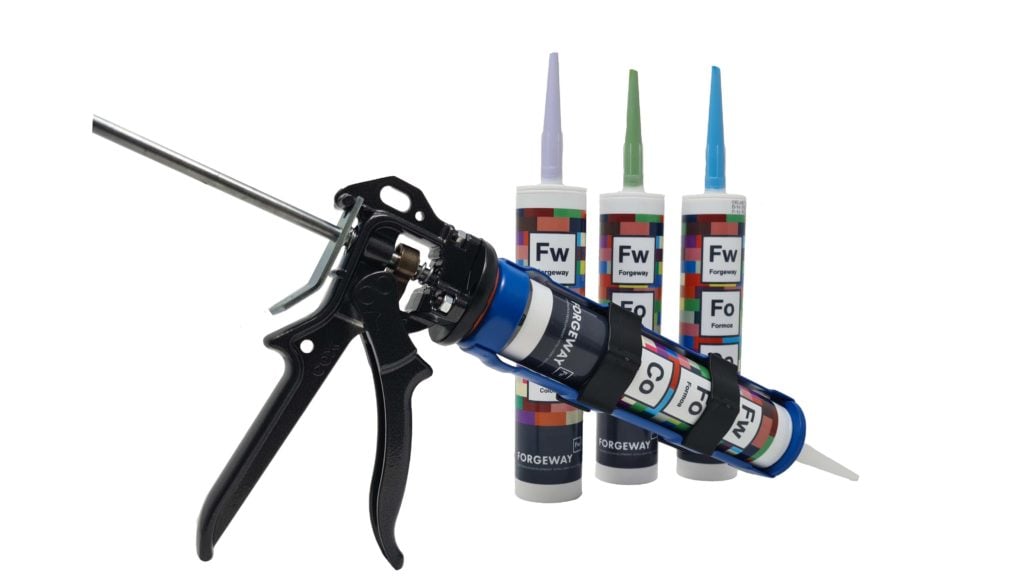Why the colour of an adhesive can affect its performance

You’ve recently changed the colour of your adhesive. But now, you’ve found that the performance of that adhesive has changed. Maybe it isn’t achieving such high strength or maybe you aren’t seeing the same amount of weathering resistance. Whatever has happened, the adhesive’s performance has changed since you switched up the colour. But why, and what can you do about it?
We often get asked this question here at Forgeway. We manufacture industrial adhesives. Manufacturing companies come to us and wonder why their adhesive’s performance has changed when they switched up the colour.
This article will discuss the different ways an adhesive’s colour could affect performance. It will then discuss what you can do to stop a colour-change causing issues (if there is anything you can do).
By the end of the article, you will be able to tell whether the colour of your adhesive is causing the performance issues you are experiencing.
The four ways colour can affect an adhesive’s performance
Whatever the colour of your adhesive, there will be ingredients within the adhesive which make it that colour. The pigment in an adhesive is the ingredient responsible for the colour.
Pigments can sometimes play a role in the performance of the adhesive. They can affect anything from strength to weathering resistance. This section will go over the four ways colour can affect an adhesive’s performance.
1. Some pigments contain plasticizers
If you have been using an adhesive product for years with no issues, you may be wondering why the colour change has affected the performance so much.
Certain pigments will contain plasticizers to help them form a paste. Adhesive manufacturers can then add that paste when they are producing an adhesive. This is one way to change the colour of an adhesive product.
However, certain plasticizers used for pigment pastes can be a problem with some adhesives. It can add to the issue of plasticizer migration which can eventually cause an adhesive to detach from a substrate; causing adhesive failure.
It’s worth noting, that not all pigments that contain plasticizers will cause plasticizer migration. It only happens in some cases with some substrates.

2. Some pigments are hygroscopic
This is particularly the case with black or grey adhesives. This is because the black pigment used is often a ‘carbon black’. Carbon black is typically a hygroscopic powder.
Hygroscopic simply means that a substance will soak up moisture.
So the carbon black pigment can soak up moisture and affect the properties of the adhesive. For example, the adhesive could soften and become more elastic, it could undergo dimensional changes by swelling, or there could be extraction of water-soluble components. Over time, these effects will have a negative impact on the adhesive’s performance.
The below picture shows black stains running down the side of a bus after rainwater brought the black water-soluble components with it.

3. You don’t always know what the pigment contains
The two causes above are fairly easy to establish because they are specific ingredients that are common problem-makers. But pigment technology is constantly changing. Manufacturers are looking for new ways to create their products.
This causes issues because these new ingredients can cause problems in the adhesive. But because they are new, no one knows if they can affect an adhesive’s performance.
This is why it is best to know that the pigment’s ingredients aren’t going to cause problems before choosing that colour. If the ingredients are known to be unproblematic, that adhesive is safe to use. You should be wary of any unknown ingredients in the pigment.

4. Some colours are more prone to UV degradation
UV degradation is a problem that all adhesives face. However, some colours are more prone to UV degradation than others. And this time the pigment isn’t to blame.
Red adhesives are the most susceptible to UV degradation. And the colours on the colour spectrum preceding red become less susceptible to UV degradation. Violet is the least susceptible colour.
Without getting too technical, red colours absorb higher energy blue light which will tend to cause more damage to the adhesive polymer.

How can you make sure the colour hasn’t changed the adhesive?
So now you know the different ways colour can affect an adhesive’s performance. Now you want to be sure that your adhesive’s performance isn’t going to be affected by its colour. But how can you do that?
We often help our customers get peace of mind when it comes to their adhesive performance. We manufacture industrial adhesives and regularly experience the effect colour has on an adhesive.
We advise you to consider the four possible ways we outlined above. If you resonate with one of those points and think your adhesive’s performance could be affected, we recommend getting in touch with your adhesive supplier just to make sure.
However, if you have read the four points and still aren’t sure, we recommend you look at some testing methods to assess the adhesive’s performance.
But we know that the world of adhesive testing is a murky place. You will want to be sure you know what to look out for and know what to do to avoid the pitfalls of the adhesive testing process. Read our article on adhesive testing to make sure the testing process doesn’t have any unnecessary stumbling blocks.
Thomas is the Content Manager here at Forgeway. Thomas' job is to translate the technical jargon from the ivory tower of academia into easy-to-read content that everyone can understand. Forgeway's mission is to answer every question our customers and prospective clients ask, or are apprehensive to ask.
Topics:



